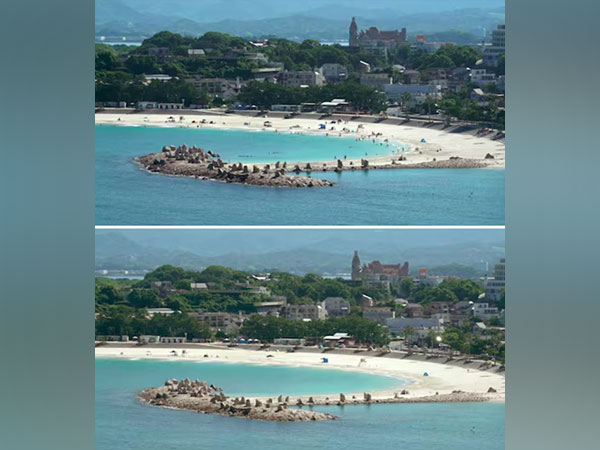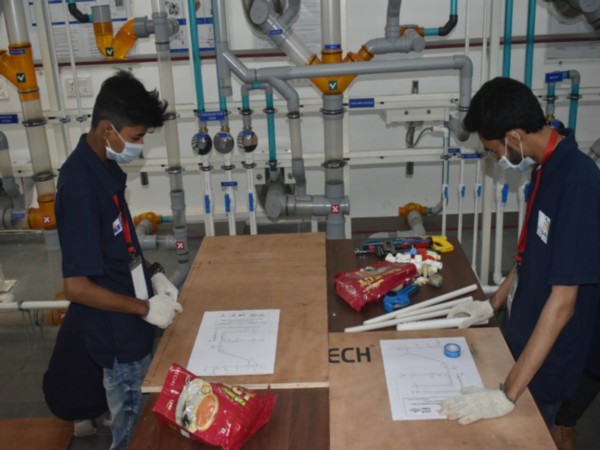
Pacific states breathe easier after huge quake triggers tsunami scare
Jul 31, 2025
Moscow [Russia], July 31: A massive earthquake off Russia's Kamchatka Peninsula sent tsunami waves in the paths of millions of people in countries across the Pacific on Wednesday.
From Japan, China and the Philippines to Hawaii, the US West Coast and Latin American countries like Mexico and Ecuador, warnings and evacuation order were issued due to the threat of potentially life-threatening, meter-high waves.
Yet more than half a day after the quake rocked Russia's Far East, there were no reports of major damage. In most regions, tsunami warnings were downgraded or, like in Russia and Japan, lifted entirely.
The danger was not over, however.
Chile was still calling for mainland coastal regions to be evacuated, while on Easter Island the coastal promenade in Hanga Roa was closed, though most residents live in higher, safer areas, according to Radio Cooperativa.
World's strongest earthquake in 14 years
The main quake, which hit at about 11:24 am local time on Wednesday (2324 GMT Tuesday), was recorded by the US Geological Survey (USGS) at magnitude 8.8 - the strongest globally since Japan's Fukushima disaster in March 2011, and one of the six most powerful earthquakes ever measured. Russian authorities reported a magnitude of 8.7.
According to the Russian Academy of Sciences, it was the strongest earthquake to hit Kamchatka since 1952. The epicentre was in the open sea, about 130 kilometres from the sparsely populated coastline.
Dozens of aftershocks were recorded, many above magnitude 5. The two strongest were measured at 6.9 and 6.3 by the USGS.
Minimal damage in Russia
No major flood waves were recorded on the Kamchatka Peninsula, the Russian Civil Defence Ministry said on Telegram. A beach was evacuated as a precaution, with around 60 people brought to safety.
Most buildings withstood the quake, though structural inspections are ongoing, it said.
Kremlin spokesman Dmitry Peskov said no casualties had been reported and that alert systems functioned as intended.
In the regional capital of Petropavlovsk-Kamchatsky, frightened residents fled outside barefoot, according to the Russian news agency TASS.
According to civil protection officials, parts of the port of Severo-Kurilsk and a fisheries company were flooded.
Japan evacuates
Fukushima site
On Japan's Pacific coast, a wave measuring 1.3 metres was recorded in a port in Iwate Prefecture, with up to 80-centimetre waves in other coastal regions, local media reported.
Authorities had issued tsunami warnings for waves up to 3 metres high. Northern Japan lies geographically closest to the quake zone.
Later, the Japanese Meteorological Agency downgraded its regional alerts, although advisories were still in place.
More than 2 million people had been asked to evacuate earlier in the day. Workers at the Fukushima Daiichi nuclear plant were evacuated due to the tsunami warning.
Tokyo Electric Power Company (TEPCO) confirmed to the Japan Times that all staff reached higher ground safely.
The facility was the site of a major nuclear disaster in March 2011, when an earthquake and tsunami triggered multiple reactor meltdowns.
Warnings for Hawaii, US West Coast
Initial tsunami waves reached Hawaii Tuesday evening, with a peak of 1.5 metres. The US downgraded its warning by early Wednesday and life on the archipelago had returned to normal. Warnings were also issued along the US West Coast, Alaska, Canada's British Columbia, and parts of Latin America.
In Asia, China lifted its alert for coastal Zhejiang and Shanghai, while Taiwan also called off its alert. The Philippines and Indonesia later withdrew warnings after only minor sea level changes were observed.
Volcano erupts in Russia's Far East
Hours after the earthquake rocked Kamchatka, the region's highest volcano began erupting.
Geophysicists from the Russian Academy of Sciences reported a strong glow visible at the summit of the 4,750-metre Klyuchevskoy volcano in the Russian Far East. Lava was seen flowing down one flank of the mountain, and explosions were audible, the experts said.
Also known as Klyuchevskaya Sopka, the volcano is located roughly 400 kilometers north of the regional capital, Petropavlovsk-Kamchatsky.
It is considered the highest active volcano in Eurasia and forms part of the Pacific Ring of Fire - a seismically volatile zone encircling the Pacific Ocean.
Source: Qatar Tribune









